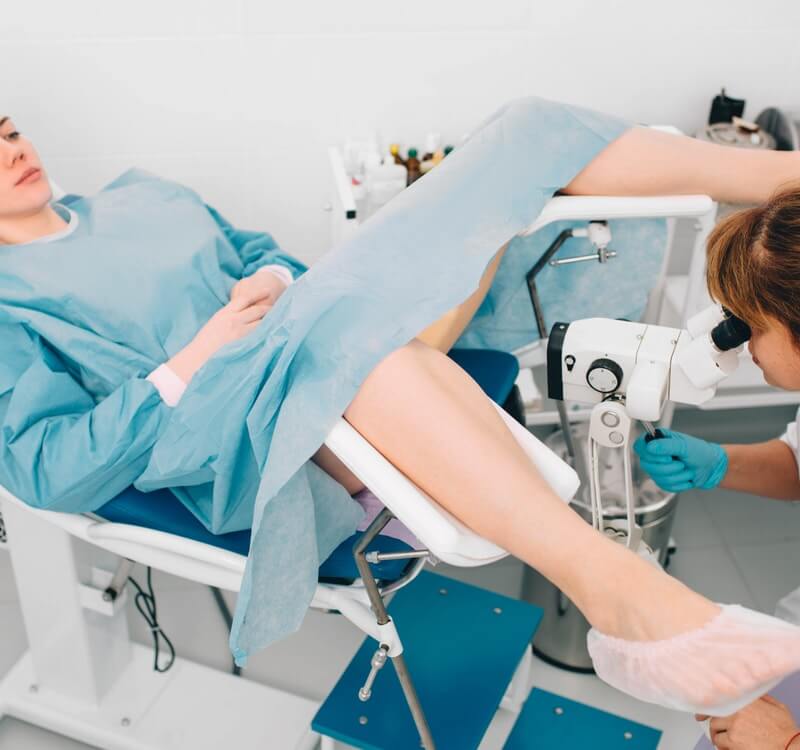When it comes to reproductive health, there are many things that come as part of the routine — knowing when you’re getting your period, which products work best for you, and scheduling an annual well-woman exam. However, sometimes you get that dreaded call from your gynecologist’s office, telling you that you should schedule a follow-up appointment to discuss abnormal results. Sometimes, this means needing a colposcopy to look into the health of your cervix. Other times, this may mean needing a vulvar biopsy. But, what exactly is such a procedure? Why is it needed? What can you expect from it? And, does it hurt?
What is a vulvar biopsy?
When a gynecologist performs a well-woman exam, the procedure includes a physical examination of your pelvis. This includes examining your vagina, cervix, and uterus to detect whether there is anything unusual. If there are patches of skin in the vulva that look abnormal, your gynecologist will want to perform a vulvar biopsy. This involves taking samples of tissue from the vulva to test for vulvar cancer.
What are the common reasons for a vulvar biopsy?
There are several reasons why an OB-GYN may believe a biopsy is necessary. Several abnormalities on the skin may indicate either cancer or another underlying disease. These include:
- Patches of skin that are a different color
- Bumps on the skin
- An abnormal growth
- Areas of the vulva that turn white when cleaned
- Sores that won’t heal
- Genital warts that won’t go away
- Redness or swelling
What to Expect From a Vulvar Biopsy
A vulvar biopsy is a quick procedure. Prior to getting started, your doctor will recommend taking an over-the-counter painkiller. Once you’re in the room where the biopsy will take place, you will lay down on an examination table for the next steps:
- The doctor will use a speculum to have a better view of your vagina. This is the same instrument that’s used during your annual pap smears.
- The area of the vulva where the biopsy will occur will be cleaned with an antiseptic substance.
- Your doctor will inject local anesthesia to numb the area where the tissue sample will be removed.
- Your doctor will remove small parts of the vulva that need to be examined.
- The area will be stitched with dissolvable stitches.
Once the biopsy has been completed, your doctor will give you instructions on how to care for your vagina as it heals. The removed tissue will then be sent to a laboratory so that a pathologist can examine it for precancerous or cancerous cells. Results are generally available within a week.
Does a vulvar biopsy hurt?
Since your doctor injects anesthesia prior to the procedure, you should not feel any pain. However, you may feel pressure or slight pulling as the OB-GYN takes sample tissue. Talk to your doctor about continuing to take over-the-counter medications after the procedure while your vulva heals.
Recovery From a Vulvar Biopsy
Recovery time takes approximately 10 days. Always follow the instructions provided by your OB-GYN. Generally speaking, you should be able to bathe or shower as soon as you want. When you’re done with your shower, gently pat your vagina dry. The area should remain clean and dry as often as possible. If your procedure required stitches, cover the area with petroleum jelly to prevent urine from making the cut sting. Call your doctor immediately if you experience any symptoms of infection or complications, including:
- Fever
- Redness, swelling, or skin that feels warm to the touch
- Bleeding
- Foul-smelling vaginal discharge
If You Need a Vulvar Biopsy, OB-GYN Women’s Center Can Help
At OB-GYN Women’s Center, we aim to make all of our patients feel comfortable. And getting answers to all your questions is the first step in getting the treatment you need.
Contact us to schedule an appointment.


